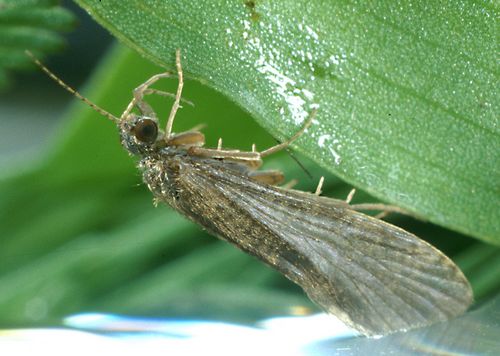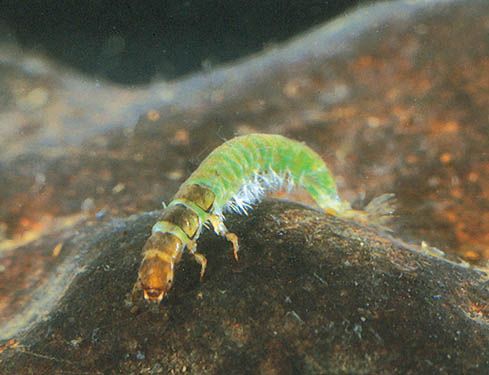Insects: Introduced Species
Scientific name: Cheumatopsyche analis
Common name(s): Little Sister Sedge Caddisfly


Habitat: Moderate to swift flowing sections of stream, common in cobble to boulder sized substrate
Preferred Area of Stream: Riffles and Runs
Range in Hawai‘i: Common on all Hawaiian Islands
Diet: Herbivorous and appears to eat mainly algae and diatoms. Sometimes a loose silken net is constructed at the base of its rocky case, this net acts as a filter for organic debris that it eats.
Predators: Birds, native and introduced fish, predatory insects such as dragonflies, introduced crustaceans
Fact: The little sister sedge caddisfly was first found in the Hawaiian Islands in 1965 and by 1971 was found on all islands with flowing water. This species has likely adversely influenced native aquatic invertebrate populations, perhaps through competition for space and resources, or simply because of its large size and great abundance in Hawaiian streams. By their sheer numbers introduced caddisflies are likely having some negative impacts on the native aquatic insect fauna, for example, in upper elevation Kaua‘i streams this species accounted for 57% of the stream insects during Surber (bottom) sampling. The case is made of irregular and loosely bound pieces of small gravel. This species is by far the most common aquatic insect found in Waipio Valley streams.
|

